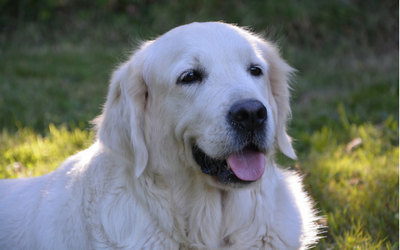What is infertility?
Posted by Carlos Dubois on
What is infertility?
Infertility in a female dog is defined as the inability to conceive and deliver viable puppies, even when mated multiple times with a known fertile male surrounding the time of ovulation.
 What are the causes of infertility in female dogs?
What are the causes of infertility in female dogs?
Fertility problems in female dogs can be broken down into several broad categories, including:
- abnormal estrous cycling
- failure to copulate (breed)
- failure to conceive
- pregnancy loss
What is abnormal cycling?
A normal female dog should begin having estrous (heat) cycles by 24 months of age. There are several stages in the estrous cycle; the stage called estrus refers to when the female is in heat or is sexually receptive. Once these cycles begin, the dog should experience estrus at regular intervals. Most female dogs cycle every four to ten months, although there are exceptions; some dogs may only cycle once per year.
Abnormal cycling is a term used to describe a female dog that is not experiencing normal heat cycles. These abnormalities may include delayed, absent, or irregular cycles.
Primary persistent anestrus describes a female dog that has reached 24 months of age without estrous cycling. This condition may be caused by a number of factors, including malnutrition, excessive physical activity, medications that interfere with fertility, or a lack of exposure to other cycling females. Additionally, hormonal imbalances and genetic disorders may prevent normal estrous cycles. Some dogs experience a condition called silent heat, in which they do ovulate but the characteristic signs of being in heat, vulvar swelling and discharge, are not observed. Although rare, some dogs may also have an autoimmune disease that affects their ovaries and interferes with estrous cycling.
If a dog has experienced one cycle but does not cycle again, secondary persistent anestrus may be diagnosed. This term describes a delay of over 18 months since the last estrus. In some dogs, this is an age-related condition; dogs under 24 months old may experience irregular cycles, and the same is typically seen in older dogs. Some dogs may also experience silent heat, as discussed above. A variety of infections (e.g., E. coli, brucellosis, ureaplasmosis) as well as metabolic diseases (e.g., renal failure, Cushing’s disease) may also cause systemic diseases that can lead to a failure to cycle. Exposure to exogenous (external) oral and topical steroids (such as in the case of owners who have applied steroid/hormone creams to their skin) and hormonal imbalances may also lead to persistent anestrus, as can ovarian tumors.
A dog that enters heat and remains in heat for over six weeks is diagnosed with persistent estrus. Causes of persistent estrus include exposure to exogenous hormones (intentionally or unintentionally), hormonally-active ovarian cysts, and ovarian tumors.
Irregular estrus cycling indicates that the ovaries are not functioning properly. In this case, abnormal hormone levels are often responsible for a failure to trigger regular estrous cycles.
What causes failure to copulate?
If the time of fertility is inaccurately estimated, this may lead to the female being unwilling to copulate. Many cases of female infertility are likely related to poorly-timed breeding.
"Many cases of female infertility are likely related to poorly-timed breeding"
Behavioral factors may also contribute to a refusal to copulate. These factors include a dominant female dog refusing to stand for a submissive male, attempts to breed a female that is sexually immature, a stressful or otherwise unpleasant breeding environment, and inappropriate behaviors by either the male or female.
Physical factors may also contribute to a failure to copulate, if they are a source of pain for the female. Common physical causes of reluctance to copulate include hereditary abnormalities of the vagina, a history of vaginal trauma, or vaginal growths. Additionally, conditions such as osteoarthritis or back pain may make females resistant to standing for a male, leading to a reluctance to copulate.
Why would a dog with normal copulation, performed at the appropriate time, fail to conceive?
In many cases, failure to conceive is related to poor timing. If the breeding is properly timed, the male is known to be fertile, and the semen was handled correctly (in the case of artificial insemination), physical abnormalities of the female may be suspected.
Infection or inflammation of the uterus may be associated with decreased fertility. Some degree of uterine inflammation, known as cystic endometrial hyperplasia, is observed in many female dogs over six years of age. Infections such as Brucellosis or canine herpesvirus may also interfere with successful conception.
Hereditary abnormalities of the reproductive tract may also interfere with successful conception or implantation. Finally, masses such as benign uterine polyps or malignant tumors may interfere with conception.
If a dog successfully conceives, what can cause pregnancy loss?
Pregnancy loss may be attributed to a number of factors. Imbalances in reproductive hormones may result in insufficient hormone levels to sustain pregnancy. Other hormonal imbalances, such as diabetes and hypothyroidism, may have effects on reproductive hormone levels and result in pregnancy loss.
The administration of certain drugs may lead to fetal death, as can a number of infections (most notably Brucellosis).
What tests will my veterinarian run to assess my female dog’s infertility?
Your veterinarian will begin with a complete physical exam and history, which may suggest a the cause of infertility. Next, your veterinarian will likely perform a number of tests, in order to assess the cause of your dog’s infertility. These tests include:
- Complete blood cell count, chemistry, and urinalysis. This baseline screening lab work is used to assess your pet’s overall health and search for concurrent medical conditions.
- Infectious disease screening. Your veterinarian will likely test for the presence of Brucellosis, and may test for other infectious diseases if indicated, based on the exam and screening lab work.
- Hormone assays. A number of hormone assays may be performed. These may include assays for progesterone (a hormone that aids in the maintenance of pregnancy), estradiol (a hormone involved in estrous cycling), and relaxin (a hormone involved in embryonic loss).
- Imaging. Your veterinarian may use X-rays or ultrasound to look for abnormalities in the abdomen.
- Vaginal cytology and culture. This test involves taking a swab from the vagina for microscopic examination and bacterial culture.
How is infertility treated in the female dog?
The treatment of infertility depends upon the results obtained during the diagnostic workup, and the resulting diagnosis. Ovarian cysts or tumors may require surgical excision, hormonal imbalances may need to be corrected, and infections may require treatment.
"All breeding females should be provided with a sanitary, low-stress environment, and optimal nutrition."
Medications can be used to induce estrus in dogs that are not cycling. The success of this technique is variable, but it can lead to a successful breeding. Heat shots are the most effective.
Optimizing the timing of breeding may be helpful, as many cases of female infertility are due to poor breeding management. This can be most effectively done by measuring hormone levels to determine the day of ovulation. In cases where natural breeding can be performed, the dogs should be allowed to mate every other day for as long as the female will allow it. With artificial insemination, the optimal timing for insemination should be based on the type of semen used and the method of insemination.
Regardless of fertility status, all breeding females should be provided with a sanitary, low-stress environment, and optimal nutrition. Raw diets should be avoided in breeding dogs, due to the risk of infections that may contribute to infertility. Take the necessary environmental conditions maintenance.

